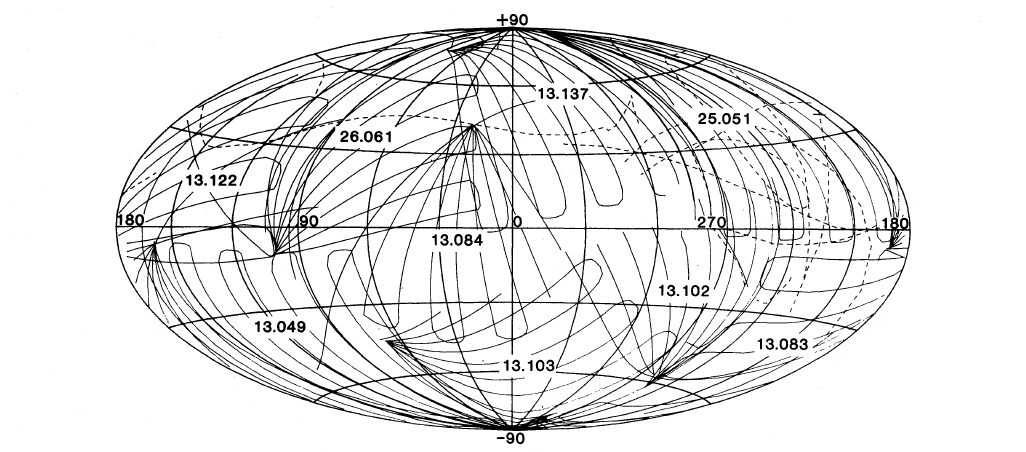WASS
The instrument on all the sky survey flights was a gas proportional counter with three-sided anticoincidence, filled with a 90% argon/10% methane mix at ∼1 atm pressure at 20° C (780 torr for the White Sands launches, 860 torr for the Woomera launches). It was equipped with honeycomb collimators that gave a 6.5° field of view. The data were collected while scanning a fan-shaped pattern, with the field motion typically proceeeding at a rate of 5°.5 s-1. An inertial attitude control system provided an absolute accuracy of pointing during the flight of about 2° while a pair of 35 mm cameras provided post-flight aspect calibration to roughly 0°.2 accuracy. Each individual flight scanned roughly one eighth of the sky. Both payloads IV and III had similar designs, but the payload III version had
smaller dimensions. Specifically, payload IV used a carbon-filter counter with
with 830 cm2 net open area, and a boron-filter
counter with 475 cm2 open area.
Payload III, used on two of the early flights, contained
smaller counters with 460 cm2 net area for the carbon
filter and 260 cm2 for the boron filter.
Other specifications of anticoincidence layers and front and back
layer materials were otherwise the same.
=============================================================
Band Name Pulse Height 20% Reposnse
Limit (keV) Points (keV)
==============================================================
B 0.06-0.35 0.13-0.188
C 0.06-0.45 0.16-0.284
M1 0.50-0.65 0.44-0.93
M2 0.65-0.85 0.60-1.1
I 0.85-1.2 0.77-1.5
J 1.20-2.0 1.10-2.2
2-6 keV 2.00-6.0 1.80-6.3
=============================================================
Page authors: Lorella Angelini Jesse Allen HEASARC Home | Observatories | Archive | Calibration | Software | Tools | Students/Teachers/Public Last modified: Thursday, 02-Jul-2020 12:23:21 EDT |


 Scan paths for the rocket flights used in the survey, shown in galactic
coordinates. The path for flight 25.045 is shown as a dashed line.
Scan paths for the rocket flights used in the survey, shown in galactic
coordinates. The path for flight 25.045 is shown as a dashed line.